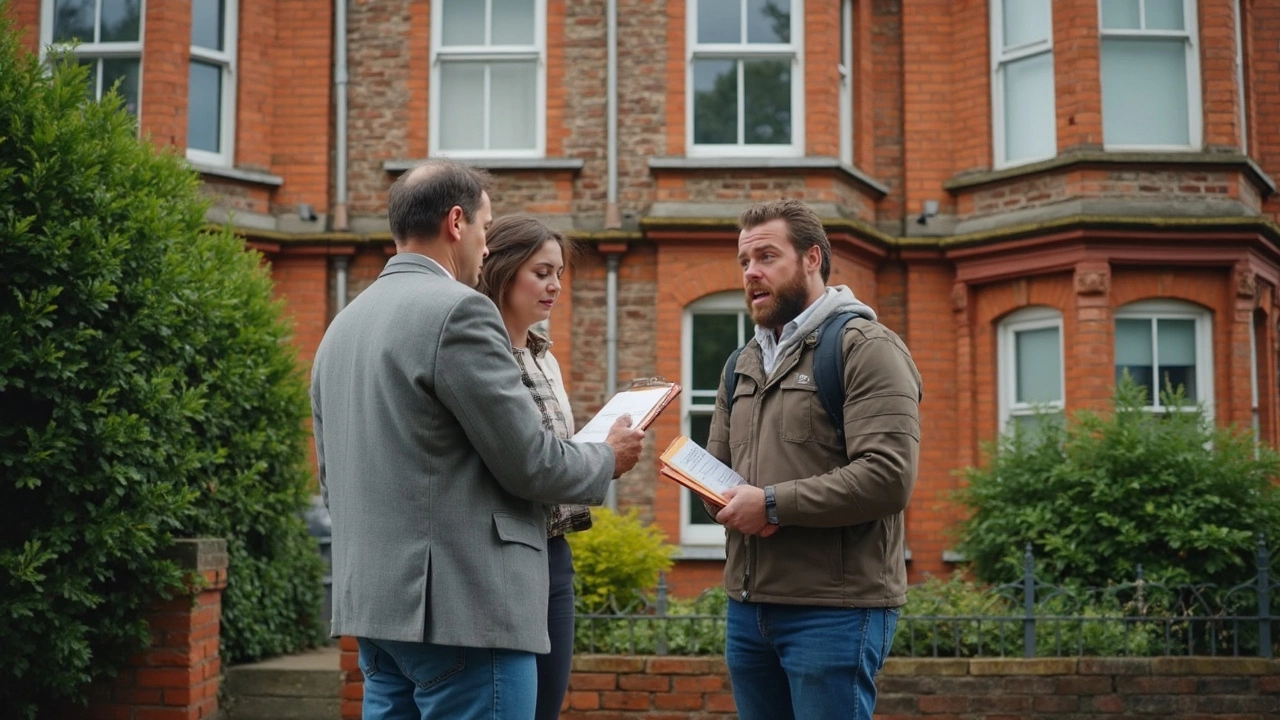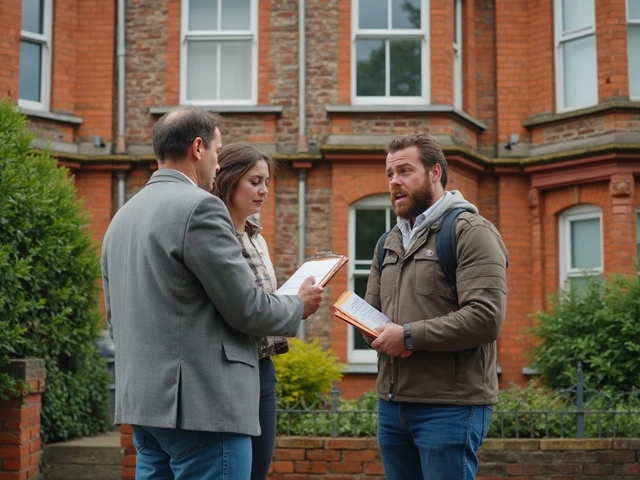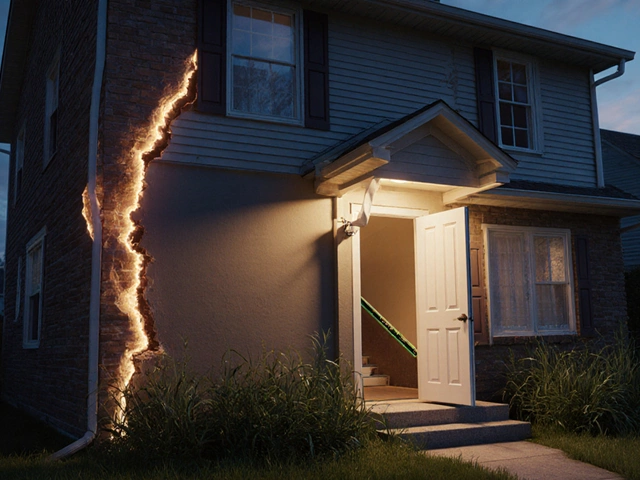Foundation Repairs: Are They Really Worth It?

Most people don't notice their foundation until something goes wrong—cracks in the drywall, windows sticking, or floors sloping just enough to make you question your balance. Foundation problems sneak up, but the longer you ignore them, the bigger (and more expensive) they get.
It's not just about making your home look good. A weak foundation can mess with your entire house. Doors won't close right, floors start sagging, and, in bad cases, plumbing lines snap from the shifting.
Wondering if it's worth the hassle and cash? Stalling on repairs can actually tank your home's value way faster than you think. In some areas, houses with unresolved foundation issues sit on the market for months—or get super lowball offers.
But let's be real—fixing foundations isn't cheap. That's why it's key to know when a repair is urgent, what happens if you wait, and how the costs compare to the benefits. We'll break down the facts, share some real-world advice, and help you figure out if now's the time to tackle those cracks for good.
- Why Homes Need Foundation Repairs
- What Happens if You Ignore Foundation Problems
- How Much Do Foundation Repairs Cost?
- Does Repairing Your Foundation Pay Off?
- Choosing the Right Foundation Repair Company
- Tips to Avoid Future Foundation Issues
Why Homes Need Foundation Repairs
Most foundations aren’t built to last forever. Even a well-built home will face some shifts over time. The most common reason foundations start having problems is soil movement. Clay soils swell with rain and shrink during dry spells, almost like a sponge. This push-and-pull puts a lot of pressure on your house, leading to cracks, uneven floors, and stuck doors and windows.
Water is another big player. Poor drainage or leaky plumbing dumps water right against your foundation. This softens the soil, making it easier for the foundation to settle or move. In fact, around 60% of homes in the U.S. are built on clay-heavy soils, which means they’re at greater risk for these issues.
Trees are surprising troublemakers too. Roots go searching for water, sometimes even creeping under your home and sucking moisture from the soil. This dries it out, causing more settling.
- Visible cracks in walls or floors
- Uneven or bouncy flooring
- Doors and windows that stop fitting properly
- Gaps around exterior windows or the garage
It’s easy to brush off these issues as "my house is settling," but they usually mean your foundation is stressed. Over time, small cracks can turn into wide gaps, and floors can start sagging, making repair costs jump fast.
| Common Cause | Percentage of Cases (US) |
|---|---|
| Soil Movement | ~ 60% |
| Poor Drainage | ~ 30% |
| Tree Roots | ~ 8% |
| Others (Plumbing Leaks, Construction Issues) | ~ 2% |
No matter how new your home is, if you see signs that something’s off with your foundation repair shouldn’t wait. Ignoring it just makes the eventual repairs tougher—and pricier. Most experts recommend fixing issues early while they’re still manageable, so you avoid major headaches later on.
What Happens if You Ignore Foundation Problems
Blowing off foundation repair issues is like letting a leaky roof drip through one rainy season after another. Small problems get big, fast. It’s not just ugly cracks in your walls—those are loud warnings your house is shifting. Ignore them long enough, and bigger stuff goes wrong.
One major risk is structural damage. If your foundation keeps moving, doors and windows stick worse, floors start dipping, and, if you’re really unlucky, bricks start crumbling outside. Over time, a once-simple fix can snowball into massive repairs.
Plumbing is another victim. Most pipes run under your home. When the foundation shifts, pipes bend, snap, or leak. It’s not rare for folks to find wet spots in the yard or under the house after letting a foundation problem go for too long. Those repairs are never cheap or quick.
Mold and water damage can sneak in, too. When cracks open up, water uses them like a freeway. Your basement or crawl space might become damp, making mold growth almost a sure thing. Besides the musty smell, mold can wreck your air quality and your health.
Let’s talk money. The longer you ignore a foundation repair, the lower your home’s value drops. Appraisers often knock tens of thousands off a house with foundation issues—sometimes more. Worst case? Lenders might not even approve a mortgage on your home until it’s fixed, so selling can turn into a total nightmare.
"Homeowners often think foundation problems are just cosmetic, but left unchecked, they can lead to structural failures that are far more expensive to repair," says the American Society of Home Inspectors.
Just to recap, here’s what you risk if you skip or delay foundation repair:
- Cracked walls and ceilings get much worse over time
- Windows and doors may become totally unusable
- Plumbing repairs can add thousands to your bill
- Water leaks and mold cause health headaches
- Your home value can drop fast—and stay there
If you spot foundation problems, don’t wait for things to magically get better. Calling for help early usually saves money and keeps your house standing strong.
How Much Do Foundation Repairs Cost?
No one jumps for joy when they get a foundation repair quote—the numbers can be scary. The reality? Costs are all over the map, depending on how bad things are and where you live. For minor cracks, you might pay a pro anywhere from $500 to $1,200. But when the structure starts shifting or sinking, that bill can go way higher—think $4,000 to $15,000 for big jobs. In some wild cases with major damage, fixes have hit $25,000 or more.
You might be curious what's hiking up those numbers. Here’s what usually affects foundation repair costs the most:
- Type of repair: Simple crack filling versus adding support piers is a big difference.
- Extent of damage: Deeper or bigger cracks, leaning walls, or uneven floors cost more to fix.
- House size: Bigger homes need more work and materials.
- Accessibility: Hard-to-reach crawl spaces or basements bump up labor hours.
- Location and soil: Homes built on expansive clay or shifting soils usually cost more to repair.
Here’s a quick breakdown of actual costs homeowners have reported in 2024:
| Repair Type | Typical Cost Range |
|---|---|
| Crack Repair (epoxy/sealant) | $500 - $1,500 |
| Pier Installation | $1,000 - $3,000 (per pier) |
| Foundation Underpinning | $4,000 - $12,000 |
| Bowing Wall Repair | $4,000 - $15,000 |
| Major Structural Reinforcement | $15,000 - $25,000+ |
One good rule? Always get a few quotes—prices jump even in the same city. According to the National Association of Home Builders:
"Spending money on proper foundation repairs upfront often saves homeowners thousands in future structural and water damage."
If you’re stressing about paying for repairs, some companies offer payment plans, and homeowners’ insurance might help out if damage is from a covered risk (but not general settling). Last tip: don’t be shy about asking exactly what the quote includes. Some quotes don’t include fixing plumbing or landscaping that gets disturbed in the process.

Does Repairing Your Foundation Pay Off?
You might wonder if fixing your foundation is just pouring cash into the ground, but let's break it down. First, a strong foundation keeps your home standing straight—literally. When you repair foundation issues early, you stop bigger problems before they start. Real estate pros will tell you that homes with obvious foundation cracks or uneven floors scare off buyers fast. According to the National Association of Realtors, foundation problems can drop your home's value by as much as 10-15%. That can easily be tens of thousands wiped off the table when selling.
If you've got plans to sell someday, buyers (and their lenders) will usually want proof that any foundation repairs got done properly. Home inspectors will zero in on cracks, gaps, or weird slopes. If you haven't fixed the issues, most buyers will either walk away or lowball you hard. Even for people just planning to stick around, unresolved problems can lead to bigger bills: broken pipes, warped floors, or mold that ruins more than your weekend.
Now, let's talk numbers. While the average foundation repair might run anywhere from $4,500 to $13,000 depending on where you live and how bad the damage is, living with the mess can cost a lot more in the long run. Skip repairs and you could be looking at extra costs for water damage, pest problems, or even insurance premium hikes if your home gets flagged for risks.
- A fixed foundation makes your house safer for everyone living in it.
- It helps you snag a better resale price (and a faster sale if you ever list).
- Most repairs come with warranties, so you get some peace of mind for years.
Long story short—while no one gets excited about foundation repair bills, history shows that homeowners almost always save money (and headaches) by getting the job done right, the first time. Ignoring the problem almost always ends up costing way more later.
Choosing the Right Foundation Repair Company
Picking the right folks to fix your foundation isn't just about getting a good price—it's about making sure the job's done right the first time. Loads of companies out there promise fast fixes, but only some deliver the quality work that keeps problems from coming back.
First thing you should do: check for licenses and insurance. Any solid company should be fully licensed to work in your state and carry insurance that covers both their crew and your property. If they dodge the question or can't show proof, move on.
Reputation matters. Look for companies with a history of happy customers—read recent online reviews and ask for references. No company will have a perfect record, but if you spot a pattern of complaints about poor work or unfinished jobs, that's a red flag.
Another good sign: experience with your house type and soil. Foundation repairs in Texas are a lot different from ones in upstate New York, mostly because of the soil and weather. Ask straight up if they've fixed homes like yours before and what methods they use.
- Ask for a detailed written estimate. A real pro will check your place top to bottom before quoting a price and clearly outline what's included in the cost.
- Check the warranty—most legit companies offer one. Read the fine print so you know what’s actually covered and for how long.
- Find out what kind of repair systems they use. Pier-and-beam, slab—different problems need different solutions. Good companies explain the options without drowning you in jargon.
- Steer clear of the “one-size-fits-all” pitch. If a company tries to sell you a fix in five minutes, that's shady.
If you're curious about pricing, here's a quick look at what homeowners usually pay:
| Repair Type | Average Cost (USD) |
|---|---|
| Minor crack patching | $500 - $1,000 |
| Slabjacking | $2,000 - $6,000 |
| Pier installation | $4,000 - $15,000 |
Choosing a foundation repair company is a big decision, so don’t rush it. Take your time to compare, ask questions, and trust your gut. Remember, the right pro can protect your home’s foundation repair investment for years to come.
Tips to Avoid Future Foundation Issues
Once you get your foundation sorted, you want to keep it that way. Turns out, most problems come from stuff you actually can control—like water, trees, and even your sprinkler habits. If you care about foundation repair costs not sneaking up on you again, a few simple habits make all the difference.
- Watch the water: This is a big one. Gutters should send water at least five feet from your house. If rain dumps next to the foundation, soil swells and shrinks, which messes up your home’s stability. Splash blocks help, but extend those downspouts for real peace of mind.
- Control drainage: Standing water means trouble. Check after storms for puddles near your walls. If you see them, you might need to add soil around your home’s edge—just a gentle slope away from the foundation is perfect. French drains can help if your yard’s always wet.
- Mind the landscaping: Trees are great, but roots and thirsty plants pull moisture from under your house. Keep big trees at least 15 feet away. If you already have trees closer, consider watering around them during dry spells so roots don’t search under your house for water.
- Keep the moisture steady: If you live where it’s bone-dry sometimes and soaked at others, your soil expands and contracts like crazy. Soaker hoses (set to a low drip) let you add gentle moisture during big dry spells, especially along the perimeter.
- Watch for early signs: Walk around your house every few months, inside and out. Look for new cracks, sticking doors, or windows that don’t open. Catching things early can mean the difference between a cheap patch and serious repairs.
- Fix plumbing leaks fast: Even small leaks under your slab can wash away soil. If your water bill jumps or you notice damp spots indoors, get it checked. Foundation problems from plumbing leaks are the sneakiest and can end up being the most expensive to fix.
Taking care of your foundation isn’t a one-time task. These easy habits will save you money and headaches down the road. If you’re unsure about anything you spot, get a pro to look at it sooner rather than later. Trust me, your house—and your wallet—will thank you.


